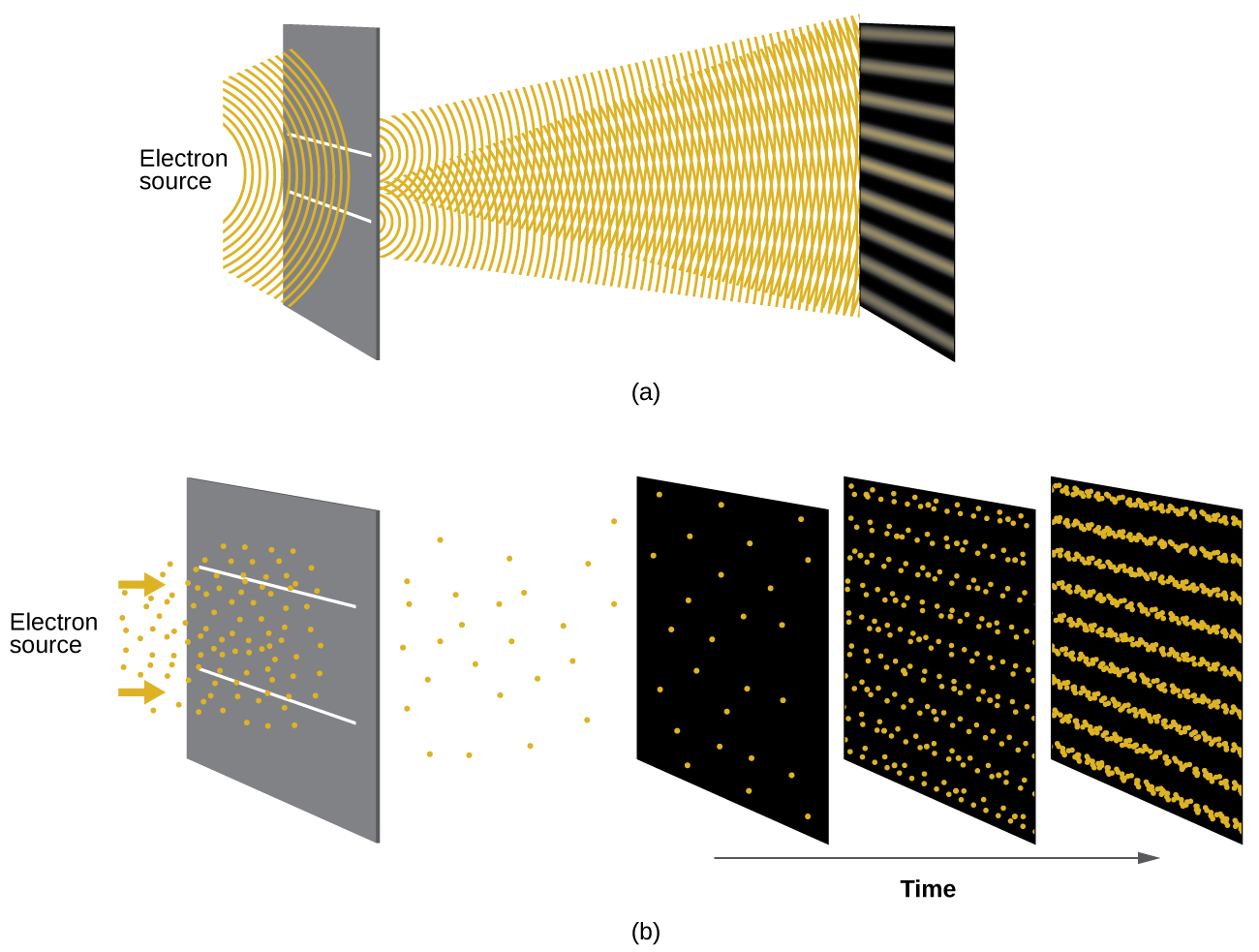| << Chapter < Page | Chapter >> Page > |

View the Dr. Quantum – Double Slit Experiment cartoon for an easy-to-understand description of wave–particle duality and the associated experiments.
This is a small value, but it is significantly larger than the size of an electron in the classical (particle) view. This size is the same order of magnitude as the size of an atom. This means that electron wavelike behavior is going to be noticeable in an atom.
1.9 10 –34 m.
We never think of a thrown softball having a wavelength, since this wavelength is so small it is impossible for our senses or any known instrument to detect (strictly speaking, the wavelength of a real baseball would correspond to the wavelengths of its constituent atoms and molecules, which, while much larger than this value, would still be microscopically tiny). The de Broglie wavelength is only appreciable for matter that has a very small mass and/or a very high velocity.
Werner Heisenberg considered the limits of how accurately we can measure properties of an electron or other microscopic particles. He determined that there is a fundamental limit to how accurately one can measure both a particle’s position and its momentum simultaneously. The more accurately we measure the momentum of a particle, the less accurately we can determine its position at that time, and vice versa. This is summed up in what we now call the Heisenberg uncertainty principle : It is fundamentally impossible to determine simultaneously and exactly both the momentum and the position of a particle . For a particle of mass m moving with velocity v x in the x direction (or equivalently with momentum p x ), the product of the uncertainty in the position, Δ x , and the uncertainty in the momentum, Δ p x , must be greater than or equal to (recall that the value of Planck’s constant divided by 2 π ).

Notification Switch
Would you like to follow the 'Chemistry' conversation and receive update notifications?